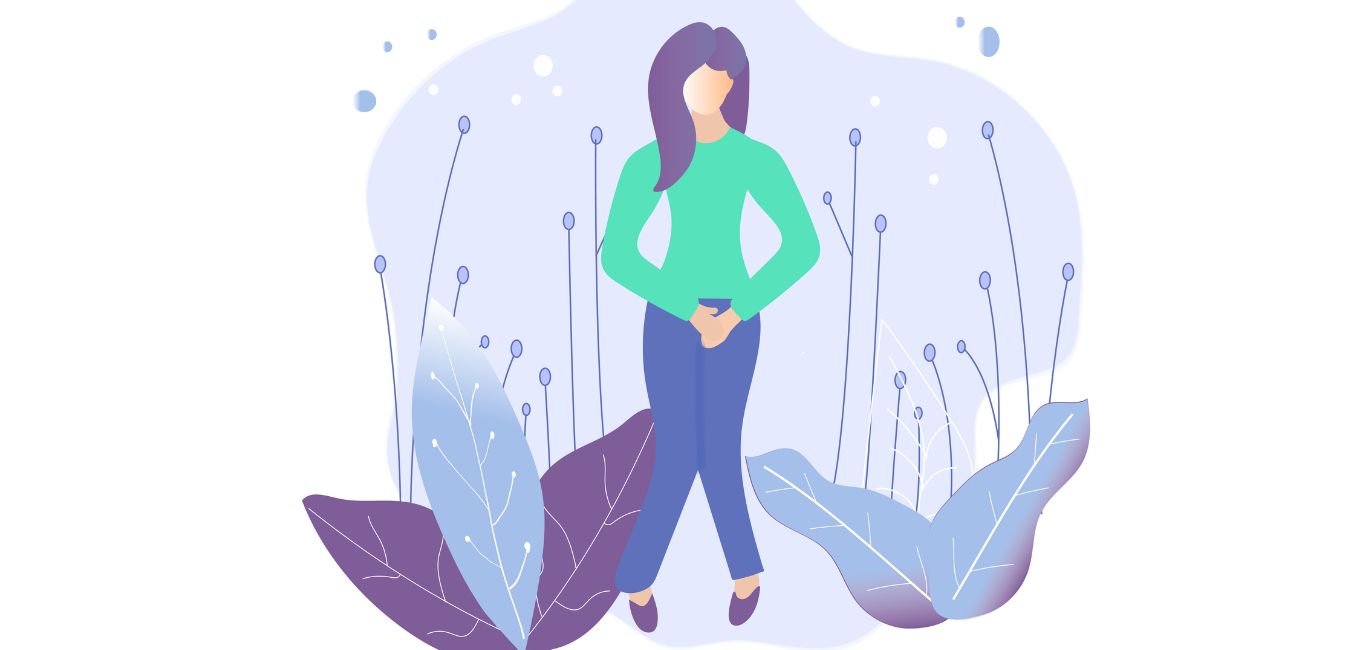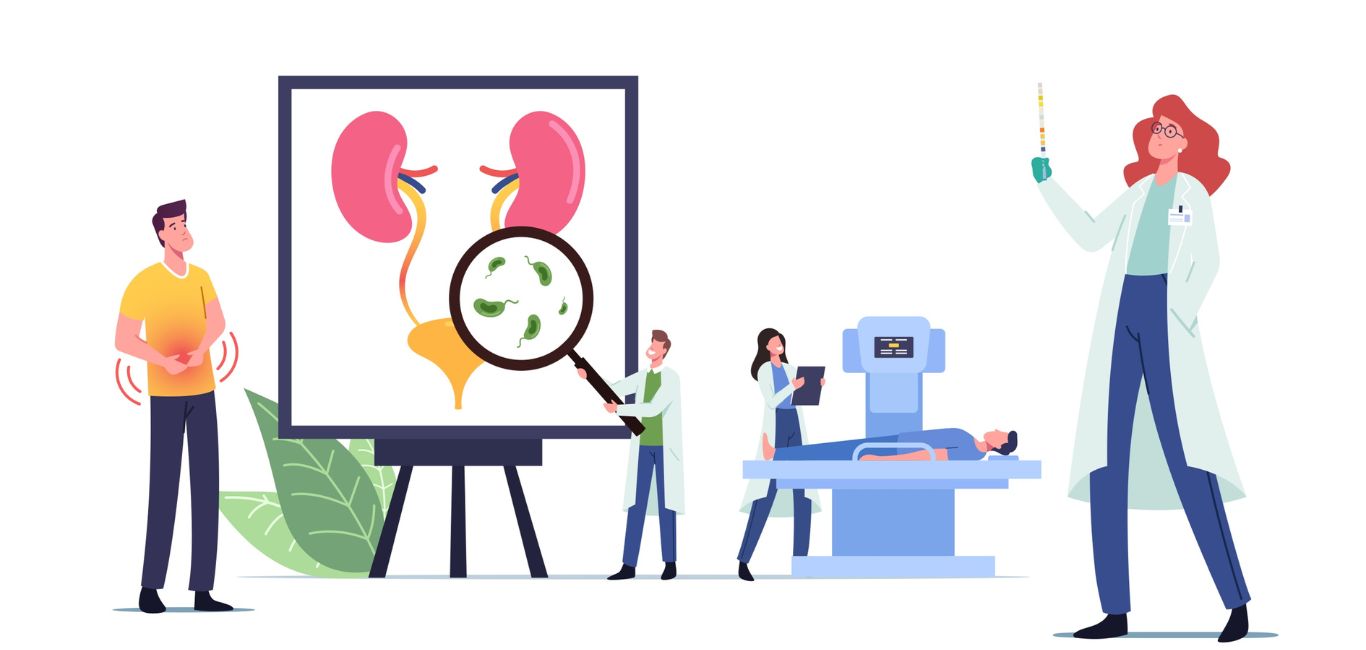
Urinary incontinence is sometimes called overactive bladder. It is a common condition due to which the affected person passes urine unintentionally. It is more common in older people, especially women.
The accidental or involuntary passing of urine, or the loss of bladder control, is an embarrassing problem. It often forces the affected people to restrict their social outings and sometimes even normal activities. The severity can range from an occasional leak due to stress, to slight but more frequent discharge of urine, and sometimes severe, frequent wetting.
Types
Incontinence is not seen as a disorder and is often a symptom of many other conditions. There are individual variations in urinary incontinence. Two of the commonly seen types are:
- Stress incontinence – Sudden and extra pressure on the urinary bladder can cause people to leak small amounts of urine. It can result from coughing, sneezing, or lifting heavy objects.
- Urgency incontinence – The bladder muscles are sometimes overactive, causing a sudden, urgent or intense need to pass urine. Such individuals are unable to hold urine even till they reach the restroom. It can occur due to a change of position, during sleep, or during sex. People who have diabetes, Parkinson’s disease or a stroke often experience problems with bladder control.
There are other types of urinary incontinence, too.
- Overflow incontinence: This is a chronic condition of urinary retention, when the person, usually a male, is unable to completely empty the bladder, or when the quantity of urine produced exceeds the bladder’s storage capacity. This can cause frequent leaking or constant dribbling of small amounts of urine.
- Functional incontinence: Older people with arthritis or other disorders and a normal bladder may find it difficult to reach the toilet in time, resulting in functional incontinence.
- Total incontinence: This is a severe and continuous condition when the bladder is unable to store any urine, causing either constant urination or frequent leakage of smaller amounts in between occasions of passing larger amounts of urine.
- In children, the involuntary passing of urine that occurs unknowingly at night in sleep is called bedwetting or nocturnal enuresis.
Causes
Incontinence occurs when the muscles of the urinary bladder do not work as they should.
The urinary bladder is a hollow organ in the lower abdomen that stores urine transported from the kidneys. Urination occurs when the muscles in the bladder (detrusor muscles) tighten and pass the stored urine into the urethra, a tube through which urine passes out of the body.
When the bladder muscles contract, the muscles around the urethra (urethral sphincter muscles) relax and urine flows out.
Pelvic muscles
The pelvic floor muscles at the bottom of the pelvis act like a hammock and stretch from the tailbone at the back till the pubic bone at the front. These muscles are normally firm and thick and support pelvic organs like the bladder and the bowel, and the uterus (in women). When these muscles are weakened, they can cause problems with bladder control.
Some of the common causes for weak pelvic floor muscles are –
- Obesity, old age, heavy lifting, and high-impact sports where both feet are off the ground at the same time, pelvic surgery, chronic cough, and chronic constipation.
- Women who have undergone multiple deliveries are at greater risk of pelvic floor muscle damage.
- In menopausal women, the reduction in oestrogen levels can also weaken these muscles.
Stress incontinence is caused by damage to the pelvic floor muscles or to the urethral sphincter.
Urgency incontinence is due to the detrusor muscle contracting very often, and resulting in the need to visit the restroom urgently.
This condition may be caused due to excessive consumption of alcohol or caffeine, constipation, or infections in the urethra and bladder. Reduced fluid consumption can cause the urine to be concentrated, irritating the bladder and resulting in its overactivity.
Overflow incontinence occurs when the bladder stores urine normally, but is not able to empty it completely due to obstruction. The resultant pressure that has built up causes frequent leaks. An enlarged prostate gland (in men), bladder stones, or constipation may give rise to such conditions.
Sometimes, as a result of spinal cord injury or after bowel surgery, the detrusor muscle does not contract fully, and the bladder does not get completely empty during urination, and becomes stretched beyond normal.
Prolapse – When pelvic organs shift out of place and impinge on the vaginal or anal regions, normal functions of the bladder and urethra are disrupted, and result in incontinence.
Some medications can disrupt the process of storing and passing urine, or can result in excessive urine production. These include medicines like:
- Angiotensin converting enzyme or ACE inhibitors and diuretics which are given to treat high blood pressure.
- Some sedatives
Diagnosis
The presenting symptoms help to understand the cause of incontinence. A thorough medical history and details about fluid intake, frequency of urination and quantity, and the number of episodes of incontinence are all noted.
- Physical examination will involve checking the strength of the pelvic floor muscles in women, and to examine if there is enlargement of the prostate gland in men.
A sample of urine may be tested for presence of bacteria and blood by using the dipstick test, indicating a urinary tract infection.
- A residual urine test may be done to check the amount of urine left in the bladder after urination. This can be ascertained by ultrasound scans or by inserting a thin tube or catheter to the bladder.
- Cystoscopy: a flexible tube with a camera can look inside the bladder to check for any abnormality.
- These urodynamic tests can check the functioning of the bladder and urethra:
Uroflowmetry measures the amount and flow rate of urine using a special machine.
Cystometric tests measure the capacity of the bladder and the pressure inside it. They also detect if the bladder contracts unintentionally.
Treatment
The type of incontinence and its severity determine the treatment. It begins with conservative measures.
- Lifestyle changes can include drinking the right amount of fluids, reducing caffeine and alcohol consumption, and losing weight if indicated. Spicy and acidic foods irritate the bladder and should be avoided.
- Kegel exercises are recommended to strengthen the pelvic floor muscles and must be repeated for a few months. For those who are unable to complete these exercises, mild electrical stimulation via a small probe can strengthen the muscles.
- Bladder training combined with muscle training can increase the interval between the urge and the act of passing urine.
Personal hygiene products
A lot of relatively easy to use personal hygiene products are available that can be used to manage incontinence, such as absorbent pants, diapers, or pads, and other devices that can be placed inside the urethra to prevent leaks while performing daily activities.
Medication
- Your doctor may prescribe medicines to improve the tone of the urethral sphincter muscle to keep it closed and help with stress incontinence.
- Antimuscarinic agents are used to treat urge incontinence.
- Diuretics may be prescribed to prevent bedwetting.
- Hormone-based creams can help women affected by urge or stress incontinence.
Surgery
There are many surgical procedures that can be tried, and they have their risks and benefits.
- Botox injections can be given into the bladder to treat urge incontinence and overactive bladder syndrome.
- Bulking agents help to close the bladder opening. Gels or paste are used to thicken the area around the urethra to reduce stress incontinence.
- Colposuspension is a procedure where the neck of the bladder is lifted and stitched in this new position. It is helpful in women with stress incontinence.
- Surgical slings can be placed around the neck of the bladder to help support it and prevent urine leaks. These slings can be made of tissues taken from the person’s own body.
- Augmentation cystoplasty where the size of the bladder is increased by adding tissues from the intestine.
- Urinary diversion where urine is directed from the kidneys to a bag outside the body. This procedure has several complications.
- Artificial urinary sphincter for men.
- Peripheral nerve stimulation.
Catheterisation
- A procedure called `clean intermittent catheterisation’ can be used to empty the bladder at regular intervals and is used for chronic urinary retention.
- In the case of `in-dwelling catheterisation’ a catheter is left in place with a bag at one end to collect urine.
Sources:

















